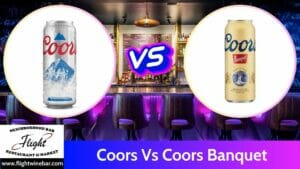Alcohol consumption is a part of many adults’ lives. Whether it’s a glass of wine with dinner, a cold beer on the patio, or an evening out at the bar – it’s important to be aware of how much alcohol you’re consuming and its potential effects on your health and safety. But if you’re like most people, you might be asking yourself “How much alcohol is in one shot?” In this blog post we’ll discuss what constitutes a standard drink and how that translates to different types of spirits so that you can stay informed and safe when consuming any type of alcoholic beverage. Read on for more insight into balancing moderation and fun!
Defining a Shot
Contents
- 1 Defining a Shot
- 2 What is a Shot?
- 3 Standard measurements of a shot
- 4 Differences in shot sizes across countries and regions
- 5 Explanation of common types of shots
- 6 Understanding Alcohol Content of a Shot
- 7 How Much Alcohol Is In A Shot?
- 8 Alcohol Content in Different Types of Shots
- 9 Measurement of Alcohol in a Shot
- 10 Effects of Alcohol Consumption
- 11 Benefits and Drawbacks of Drinking Shots
- 12 Possible Health Risks Associated with Consuming Shots
- 13 Tips for Safely and Responsibly Enjoying Shots
- 14 Ways To Reduce Alcohol Levels In The Body Naturally And Quickly
- 15 Conclusion: How Much Alcohol Is In A Shot
- 16 FAQs about Shot Alcohol Content
- 17 What is a shot of alcohol?
- 18 How much alcohol is typically in a shot?
- 19 How many shots can I safely consume in a night?
- 20 What is considered a standard drink?
- 21 What is the difference between a shot and a jigger?
- 22 How do I know how much alcohol is in a shot?
- 23 What types of liquor have the highest alcohol content in a shot?
- 24 How long does it take for a shot of alcohol to affect me?
- 25 Can the alcohol content of a shot vary depending on the brand or type of liquor?
- 26 How can I tell if a shot contains a lot of alcohol?
- 27 How can I make a shot less strong?
- 28 How can I make sure I’m not overdoing it when drinking shots?
- 29 Can drinking shots lead to alcoholism?
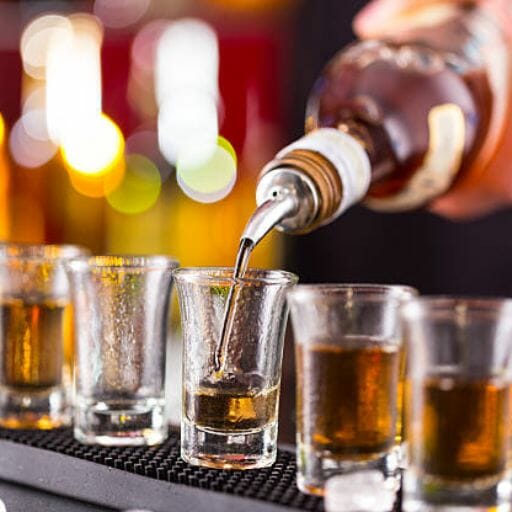
What is a Shot?
A shot is an alcoholic beverage served in a single and usually small serving size, typically 1-2 ounces. It can be consumed straight or as part of a cocktail. Shots are often referred to as shooters and are widely available at many bars and pubs. A shot is a small serving of an alcoholic beverage, typically consumed in one sip. The standard measurement of a shot in the United States is 1.5 fluid ounces, which is equivalent to approximately 44 milliliters. However, the size of a shot can vary across countries and regions, with some places using smaller or larger measurements.
Standard measurements of a shot
In the United States, the standard measurement for a shot is 1.5 fluid ounces. This measurement is commonly used for spirits, such as whiskey, vodka, gin, and tequila, as well as liqueurs and other types of alcohol.
Differences in shot sizes across countries and regions
Outside of the United States, the size of a shot can vary significantly. For example, in the United Kingdom, a shot is typically 25 milliliters, while in Japan, a shot can range from 25 to 60 milliliters. Some countries, such as Australia and New Zealand, use a larger measurement of 1.7 fluid ounces, while others, such as Spain and Portugal, use a smaller measurement of 1 fluid ounce.
Explanation of common types of shots
Shots come in a variety of different types, each with their own unique characteristics. Some of the most popular types of shots include:
- Straight shot – This is a shot of liquor consumed on its own, without any mixers or chasers.
- Jello shot – This is a shot made by mixing gelatin and alcohol, typically served in small cups or shot glasses.
- Irish car bomb – This is a popular shot made by dropping a shot of Irish whiskey and Bailey’s Irish Cream into a pint of Guinness beer.
- Kamikaze – This is a sour cocktail made with vodka, triple sec, and lime juice.
- B-52 – This is a layered shot made with coffee liqueur, Irish cream, and Grand Marnier.
Understanding the different types of shots and their unique characteristics is important for determining the alcohol content of a given drink.
Understanding Alcohol Content of a Shot
The alcohol content of a drink is the percentage of ethanol present in the beverage. This percentage is typically expressed as a volume percentage, which refers to the number of milliliters of ethanol per 100 milliliters of liquid. Understanding how alcohol content is measured and the factors that affect it is essential for understanding the strength of a given drink.
Definition of alcohol content and how it is measured
Alcohol content is measured using a variety of methods, including distillation, hydrometry, and chromatography. The most common method of measuring alcohol content is through hydrometry, which involves measuring the specific gravity of a liquid and using this measurement to calculate the percentage of ethanol present.
Factors affecting alcohol content in different types of alcohol
The alcohol content of a given drink can vary depending on a variety of factors, including the type of alcohol, the fermentation process, and the aging process. For example, spirits such as whiskey and vodka typically have a higher alcohol content than beer and wine due to the distillation process used to produce them. The length of the fermentation and aging processes can also affect the alcohol content of a drink, with longer fermentation and aging times resulting in a higher alcohol content.
Explanation of the concept of proof and its significance in measuring alcohol content
The concept of proof is a measure of the alcohol content of a beverage and is commonly used in the United States. The proof of a drink is double its alcohol content by volume, so a drink with 40% alcohol by volume is 80 proof. The use of proof is significant because it allows for easy comparison of the alcohol content of different types of drinks.
Understanding the alcohol content of a given drink is important for determining its effects on the body and for making responsible decisions about alcohol consumption. By understanding the factors that affect alcohol content and the methods used to measure it, individuals can make informed decisions about their drinking habits.
How Much Alcohol Is In A Shot?
A shot typically contains 1.5 fluid ounces of alcohol. The alcohol content of a shot can vary depending on the type of alcohol used and the size of the shot. For example, a shot of 80-proof vodka contains approximately 0.6 fluid ounces of pure alcohol, while a shot of 80-proof tequila contains approximately 0.5 fluid ounces of pure alcohol. It is important for individuals to understand the alcohol content of the shots they are consuming in order to make responsible decisions about their drinking habits.
Alcohol Content in Different Types of Shots
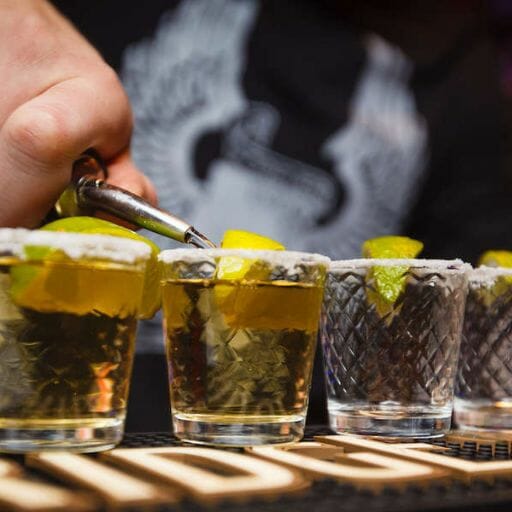
The alcohol content of a shot can vary depending on the type of alcohol used and the size of the shot. Some shots contain a higher alcohol content than others, making it important for individuals to understand the alcohol content of the shots they are consuming.
Overview of the most common types of shots and their alcohol content
The alcohol content of a shot can vary depending on the type of alcohol used. For example, a shot of 80-proof (40% alcohol by volume) vodka contains approximately 0.6 fluid ounces of pure alcohol, while a shot of 80-proof tequila contains approximately 0.5 fluid ounces of pure alcohol. Some of the most common types of shots and their alcohol content include:
- Whiskey shot – A shot of whiskey typically contains 1.5 fluid ounces of 80-proof whiskey, which is approximately 0.9 fluid ounces of pure alcohol.
- Vodka shot – A shot of vodka typically contains 1.5 fluid ounces of 80-proof vodka, which is approximately 0.6 fluid ounces of pure alcohol.
- Tequila shot – A shot of tequila typically contains 1.5 fluid ounces of 80-proof tequila, which is approximately 0.5 fluid ounces of pure alcohol.
Comparison of alcohol content in different types of shots
The alcohol content of different types of shots can vary significantly. For example, a shot of 151-proof (75.5% alcohol by volume) rum contains approximately 1.2 fluid ounces of pure alcohol, which is significantly higher than the alcohol content of a standard 80-proof shot. It is important for individuals to understand the alcohol content of the shots they are consuming in order to make responsible decisions about their drinking habits.
Discussion of popular shot recipes and their alcohol content
Popular shot recipes can vary in terms of their alcohol content. For example, a shot of the popular B-52 shot contains approximately 0.4 fluid ounces of pure alcohol, while a shot of the more potent Four Horsemen shot contains approximately 0.9 fluid ounces of pure alcohol. It is important for individuals to be aware of the alcohol content of the shots they are consuming and to drink responsibly.
By understanding the alcohol content of different types of shots, individuals can make informed decisions about their drinking habits and avoid consuming too much alcohol.
Measurement of Alcohol in a Shot
The alcohol content of a shot is typically measured by its alcohol by volume (ABV), which is the percentage of alcohol in a given volume of liquid. In the United States, a standard shot is 1.5 fluid ounces or 44 milliliters, and the ABV is expressed as a percentage of the total volume. For example, an 80-proof shot contains 40% alcohol by volume, while a 100-proof shot contains 50% alcohol by volume. Other countries may have different standard shot sizes and ABV measurements. It is important to be aware of the alcohol content of the shots you are consuming in order to make informed decisions about your drinking habits.
Effects of Alcohol Consumption
Alcohol consumption can have both short-term and long-term effects on the body, ranging from mild impairment to severe health consequences. Understanding the effects of alcohol consumption is important for making responsible decisions about drinking.
Short-term effects of alcohol consumption
Short-term effects of alcohol consumption can include impaired judgment and coordination, slurred speech, and altered mood. These effects can vary depending on the amount of alcohol consumed and the individual’s tolerance level. In extreme cases, alcohol consumption can lead to alcohol poisoning, which can be life-threatening.
Long-term effects of alcohol consumption
Long-term effects of alcohol consumption can include liver damage, heart disease, and an increased risk of certain types of cancer. Heavy and prolonged alcohol consumption can also lead to addiction and other mental health disorders, such as depression and anxiety.
Factors affecting the effects of alcohol consumption
The effects of alcohol consumption can vary depending on a variety of factors, including the individual’s age, weight, and gender, as well as the amount and frequency of alcohol consumption. Other factors that can affect the effects of alcohol consumption include the individual’s tolerance level, the type of alcohol consumed, and whether alcohol is consumed with food or on an empty stomach.
Responsible alcohol consumption
Responsible alcohol consumption involves understanding the effects of alcohol consumption and taking steps to minimize the risks associated with drinking. This can include drinking in moderation, avoiding binge drinking, and consuming alcohol with food. Individuals should also avoid driving or operating heavy machinery while under the influence of alcohol.
Seeking help for alcohol addiction
If an individual is struggling with alcohol addiction, it is important to seek professional help. Treatment for alcohol addiction can include counseling, medication, and support groups. By seeking help, individuals can take steps to overcome their addiction and improve their overall health and well-being.
Understanding the effects of alcohol consumption is essential for making responsible decisions about drinking. By consuming alcohol in moderation and seeking help for addiction, individuals can minimize the risks associated with alcohol consumption and improve their overall health and well-being.
Benefits and Drawbacks of Drinking Shots
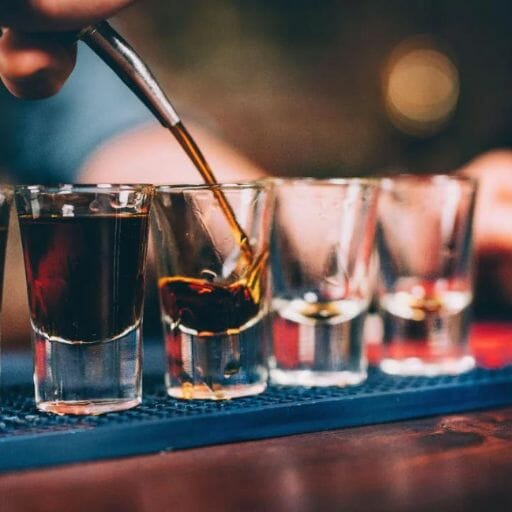
Drinking shots, like any form of alcohol consumption, can have both benefits and drawbacks. It is important for individuals to weigh these factors before deciding whether or not to drink shots.
Benefits:
- Convenience: Shots are often served in small, easy-to-consume portions, making them a convenient option for parties and social gatherings.
- Variety: Shots can be made with a variety of different alcohols and mixers, allowing for a wide range of flavor combinations.
- Cost: Shots can be less expensive than other types of drinks, as they often contain less alcohol and are served in smaller portions.
Drawbacks:
- Risk of overconsumption: The small size and convenience of shots can lead to overconsumption, which can result in impaired judgment and increased health risks.
- Rapid onset of effects: The high alcohol content of shots can lead to a rapid onset of effects, increasing the risk of alcohol-related accidents and injuries.
- Health risks: Heavy and prolonged alcohol consumption, including shots, can lead to a range of health problems, including liver damage, heart disease, and addiction.
Overall, the decision to drink shots should be made carefully, taking into account the potential benefits and drawbacks. It is important to consume shots in moderation, to be aware of their alcohol content, and to avoid drinking and driving or engaging in other risky behaviors while under the influence of alcohol.
Possible Health Risks Associated with Consuming Shots
Consuming shots can have potential health risks, particularly if consumed in excess. Here are some of the possible health risks associated with consuming shots:
- Liver damage: Consuming shots or other forms of alcohol over time can lead to liver damage, which can range from mild inflammation to severe liver disease.
- Cardiovascular disease: Excessive alcohol consumption, including shots, can increase the risk of cardiovascular disease, including heart attacks and strokes.
- Increased risk of cancer: Heavy and prolonged alcohol consumption has been linked to an increased risk of certain types of cancer, including liver, breast, and colorectal cancer.
- Risk of addiction: Drinking shots or other forms of alcohol can increase the risk of addiction, particularly if consumed regularly or in large quantities.
- Impaired judgment and coordination: Consuming shots can lead to impaired judgment and coordination, which can increase the risk of accidents and injuries.
- Risk of alcohol poisoning: Consuming shots or other forms of alcohol in excess can lead to alcohol poisoning, which can be life-threatening.
It is important to consume shots and other forms of alcohol in moderation, and to be aware of their alcohol content. If an individual is concerned about their drinking habits or is experiencing negative health effects related to alcohol consumption, they should seek professional help.
Tips for Safely and Responsibly Enjoying Shots
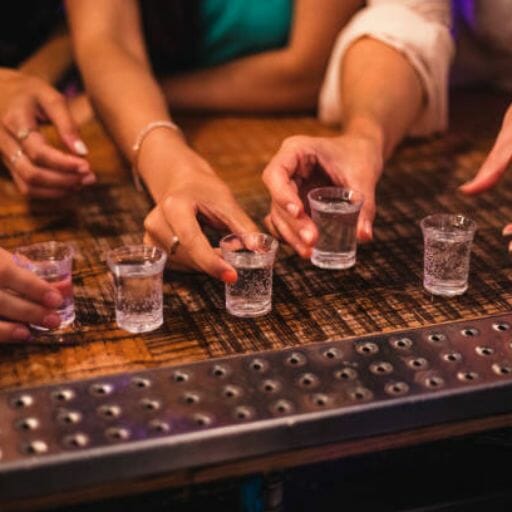
If you choose to consume shots, it is important to do so safely and responsibly. Here are some tips to help you enjoy shots in a responsible manner:
- Know your limits: It is important to know how much alcohol you can safely consume before becoming impaired. Set a limit for yourself and stick to it.
- Stay hydrated: Drinking water in between shots can help you stay hydrated and reduce the risk of overconsumption.
- Avoid drinking on an empty stomach: Eating before or while drinking can help slow the absorption of alcohol and reduce the risk of alcohol-related health problems.
- Avoid peer pressure: Don’t feel pressured to drink more shots than you are comfortable with, and don’t pressure others to drink more than they want to.
- Don’t drink and drive: Never drink and drive or get into a car with someone who has been drinking. Plan for a designated driver or use a ride-sharing service to get home safely.
- Monitor your alcohol intake: Keep track of how many shots you have consumed and the alcohol content of each shot. Pace yourself and take breaks as needed.
- Avoid mixing alcohol: Mixing different types of alcohol can increase the risk of overconsumption and other health problems.
- Seek help if needed: If you or someone you know is struggling with alcohol addiction or experiencing negative health effects related to alcohol consumption, seek professional help.
By following these tips, you can safely and responsibly enjoy shots without putting your health or safety at risk.
Ways To Reduce Alcohol Levels In The Body Naturally And Quickly
While the best way to reduce alcohol levels in the body is to wait for it to metabolize naturally, there are a few things you can do to help speed up the process. Here are some ways to reduce alcohol levels in the body naturally and quickly:
- Drink water: Drinking plenty of water can help flush out alcohol from the body and reduce the risk of dehydration.
- Eat a meal: Eating a meal that is high in protein and complex carbohydrates can help slow down the absorption of alcohol and reduce the effects of a hangover.
- Get some rest: Getting enough rest can help the body metabolize alcohol more quickly.
- Exercise: Moderate exercise can help speed up the metabolism of alcohol and help you feel better more quickly.
- Drink coffee: Drinking coffee can help stimulate the liver to metabolize alcohol more quickly.
- Take a cold shower: Taking a cold shower can help lower your body temperature and reduce the effects of a hangover.
- Drink sports drinks: Drinking sports drinks that contain electrolytes can help replace fluids lost due to alcohol consumption and reduce the risk of dehydration.
It is important to note that these methods may help reduce alcohol levels in the body, but they do not eliminate the risks associated with drinking. The only way to truly prevent the negative effects of alcohol consumption is to drink in moderation or avoid drinking altogether.
Conclusion: How Much Alcohol Is In A Shot
As you can see, knowing how much alcohol is in a shot can be a beneficial and informative tool if you plan on drinking or imbibing of any kind. In some cases, it may also be useful to know for hospitality purposes so that you’re able to provide guests with accurate drink measurements.
Understanding the true makeup of a cocktail’s proof can help individuals make wise decisions about their own consumption habits. Finally, being cognizant of the calculation and differences between different drinks helps us remember why moderation is often key when considering your health. All in all, it’s essential to research, stay informed, and act responsibly when partaking in the consumption of alcohol.
FAQs about Shot Alcohol Content
What is a shot of alcohol?
A shot is a small serving of liquor typically served in a shot glass. It is usually consumed quickly and is intended to be a single serving.
How much alcohol is typically in a shot?
The amount of alcohol in a shot varies depending on the type of liquor. On average, a standard shot (1.5 ounces) of 40% alcohol by volume (ABV) liquor contains about 0.6 ounces or 17.75 milliliters of pure alcohol.
How many shots can I safely consume in a night?
This depends on a number of factors including your weight, gender, and tolerance level. Generally speaking, it is recommended that men consume no more than two standard drinks per day and women consume no more than one standard drink per day to maintain low-risk drinking levels.
What is considered a standard drink?
A standard drink is typically defined as a 12-ounce beer, a 5-ounce glass of wine, or a 1.5-ounce shot of liquor.
What is the difference between a shot and a jigger?
A shot and a jigger both refer to a small serving of liquor, but a jigger is a specific measuring tool used to measure out a shot. A jigger is typically a double-sided cone-shaped tool that measures out precise amounts of liquor.
How do I know how much alcohol is in a shot?
The alcohol content of a shot can usually be found on the label of the bottle or by doing a quick online search. You can also use a measuring tool like a jigger to ensure that you are consuming a standard shot.
What types of liquor have the highest alcohol content in a shot?
Liquors like vodka, gin, rum, and whiskey typically have a 40% ABV, which is the highest alcohol content allowed by law in the United States. However, there are some liquors like Everclear that can have an ABV as high as 95%.
How long does it take for a shot of alcohol to affect me?
The effects of a shot of alcohol can vary depending on a number of factors including your weight, gender, and tolerance level. Generally speaking, it takes about 30 minutes to 1 hour for alcohol to be fully absorbed into the bloodstream and for the effects to be felt.
Can the alcohol content of a shot vary depending on the brand or type of liquor?
Yes, the alcohol content of a shot can vary depending on the brand or type of liquor. For example, some tequilas can have an ABV as high as 50%, while others may be closer to 35%.
How can I tell if a shot contains a lot of alcohol?
The easiest way to tell if a shot contains a lot of alcohol is to look at the alcohol content on the label. Shots with a higher ABV will typically contain more alcohol than shots with a lower ABV.
How can I make a shot less strong?
To make a shot less strong, you can dilute it with a mixer like juice or soda. You can also add ice to the shot to dilute the alcohol content.
How can I make sure I’m not overdoing it when drinking shots?
To make sure you’re not overdoing it when drinking shots, it’s important to pace yourself and know your limits. Stick to low-risk drinking levels and avoid peer pressure to drink more than you’re comfortable with.
Can drinking shots lead to alcoholism?
Drinking shots, like any form of alcohol, can lead to alcoholism if consumed in excess or if consumed regularly






